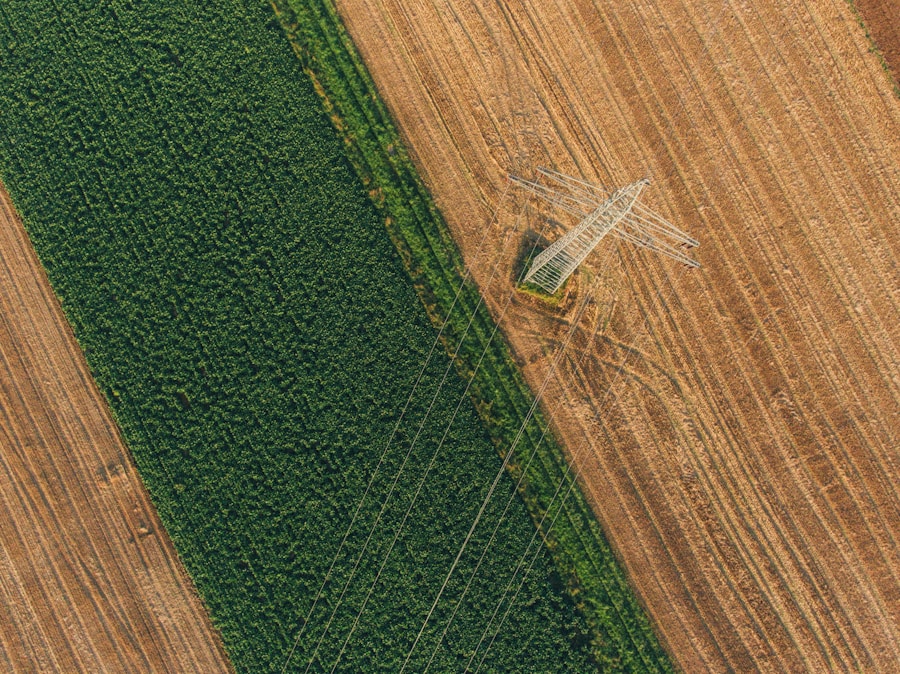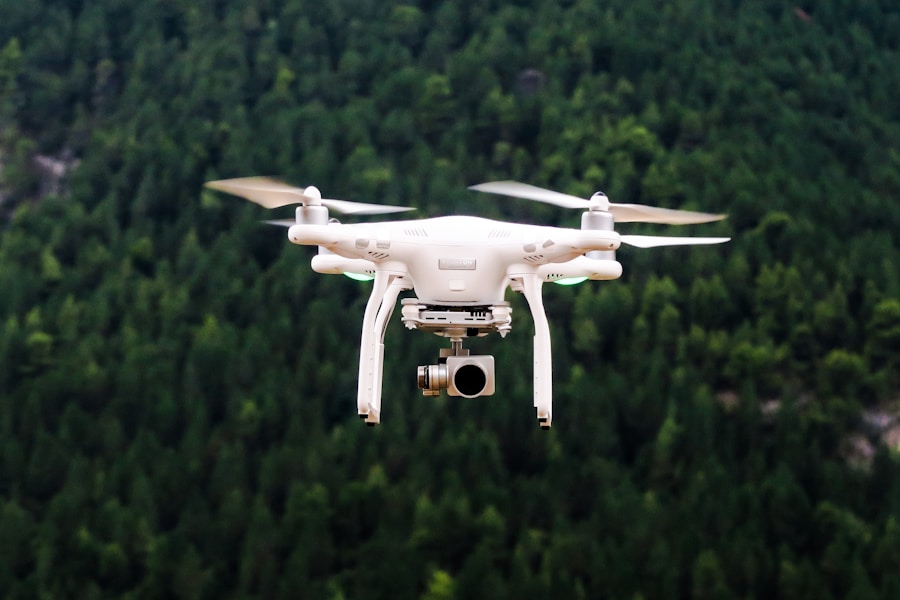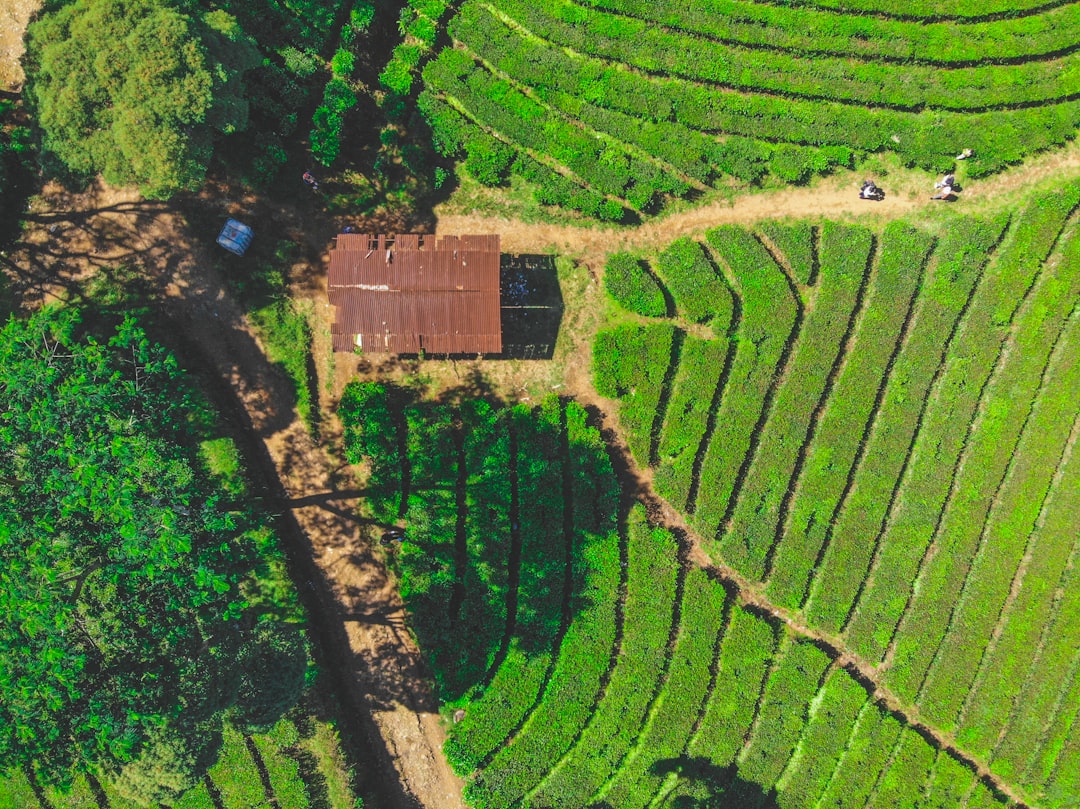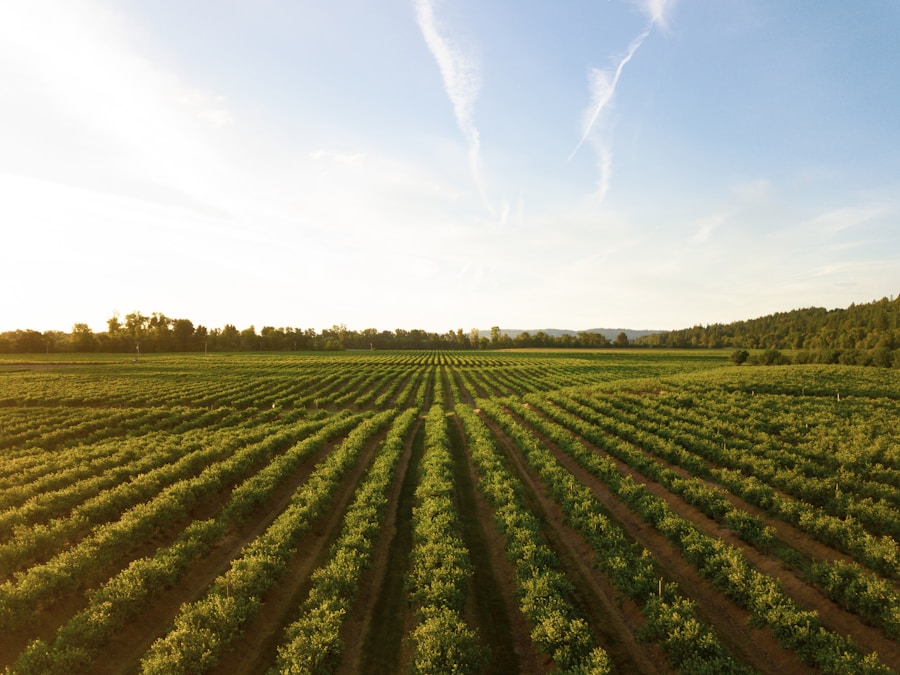Thế giới nông nghiệp đang trải qua một sự thay đổi biến đổi, driven by the growing importance of precision farming and the need for advanced technologies to meet the challenges of modern food production. At the forefront of this revolution is the rise of agricultural drones, which have emerged as a game-changer in the farming industry. Khi dân số toàn cầu tiếp tục tăng, the demand for efficient and sustainable food production has never been more pressing. Farmers are now turning to drone technology to enhance their operations, unlock new levels of productivity, and ensure the long-term viability of their farms.
The growing emphasis on precision agriculture has highlighted the need for tools that can provide detailed, real-time data on crop health, điều kiện đất, and resource utilization. Traditional methods of manual scouting and observation have become increasingly inadequate in the face of the complexities and scale of modern farming. Máy bay không người lái, with their ability to capture high-resolution aerial imagery and sensor data, have stepped in to fill this gap, offering farmers unprecedented insights into their fields and enabling them to make more informed decisions.
The integration of drone technology into the agricultural sector has been a game-changer, revolutionizing the way farmers approach their operations. From improved crop monitoring and data collection to enhanced precision in resource management and streamlined decision-making processes, drones have become an indispensable tool in the modern farmer’s arsenal. As the technology continues to evolve and become more accessible, the potential for drones to transform the future of farming is truly exciting.
Key Takeaways
- Agricultural drones offer numerous benefits for farming, including increased efficiency and precision.
- When choosing an agricultural drone, it’s important to consider factors such as payload capacity, Khả năng cảm biến, flight time, and range.
- Durability and weather resistance are crucial features to look for in an agricultural drone, as they need to withstand the elements.
- User-friendly features and automation should be prioritized when selecting a drone to ensure ease of use.
- It’s essential to navigate drone laws and regulations to ensure regulatory compliance when investing in an agricultural drone.
Understanding the Benefits of Drone Technology in Farming
The adoption of drone technology in the agricultural sector has brought about a wealth of benefits that are transforming the way farmers approach their operations. One of the primary advantages of using drones is the improved crop monitoring and data collection capabilities they offer. By equipping drones with high-resolution cameras and specialized sensors, farmers can now obtain detailed, real-time information about the health and condition of their crops, as well as the overall state of their fields. This data can be used to identify potential issues, such as pest infestations or nutrient deficiencies, and enable targeted interventions before they escalate into larger problems.
Hơn nữa, drones have significantly enhanced the precision with which farmers can manage their resources, such as water, Phân bón, and pesticides. Bằng cách tận dụng dữ liệu được thu thập bởi máy bay không người lái, farmers can now apply these inputs with surgical accuracy, ensuring that they are used only where and when they are needed. This not only leads to cost savings but also reduces the environmental impact of farming practices, promoting more sustainable and eco-friendly agriculture.
Drones have also revolutionized the way farmers conduct field scouting and crop health assessments. Instead of relying on manual inspections, which can be time-consuming and labor-intensive, farmers can now deploy drones to quickly and efficiently survey their fields, identifying problem areas and monitoring the overall condition of their crops. This streamlined approach to field scouting has enabled farmers to make more informed decisions, optimizing their operations and maximizing their yields.
The integration of drone technology into farming has also had a significant impact on the decision-making processes of farmers. By providing them with a wealth of data and real-time insights, drones have empowered farmers to make more informed and strategic choices, whether it’s determining the optimal timing for planting, harvesting, or applying specific inputs. This data-driven approach to farming has the potential to increase productivity, Giảm chất thải, and enhance the overall profitability of agricultural operations.
Key Factors to Consider When Selecting an Agricultural Drone
As the adoption of drone technology in the agricultural sector continues to grow, farmers are faced with the challenge of selecting the right drone for their specific needs. Identifying the unique requirements of your farming operation is the first crucial step in this decision-making process. Whether you’re focused on precision crop monitoring, efficient resource management, or comprehensive field scouting, understanding your specific needs will help you narrow down the available options and find the drone that best suits your farming goals.
Once you have a clear understanding of your requirements, it’s essential to explore the various drone models and their capabilities. From entry-level drones with basic features to advanced, high-performance models, the market offers a wide range of options. It’s important to carefully evaluate the specifications of each drone, including its payload capacity, Khả năng cảm biến, flight time, and range, to ensure that it aligns with your farming needs.
Balancing cost, performance, and durability is another key factor to consider when selecting an agricultural drone. While it may be tempting to opt for the most affordable option, it’s crucial to weigh the long-term benefits and potential cost savings that a more capable and durable drone can provide. Investing in a high-quality drone that can withstand the rigors of farming operations and deliver consistent, reliable performance can ultimately lead to greater efficiency and cost-effectiveness in the long run.
Cuối cùng, it’s important to consider the long-term maintenance and support requirements of the drone you choose. Farming environments can be harsh, with exposure to various weather conditions, dust, và các yếu tố môi trường khác. Ensuring that the drone you select is backed by a robust support network and readily available replacement parts can help minimize downtime and ensure the longevity of your investment.
Payload Capacity and Sensor Capabilities: Matching Drone Features to Your Farming Needs
When it comes to selecting the right agricultural drone, the payload capacity and sensor capabilities are crucial considerations. The payload capacity of a drone refers to the maximum weight it can carry, which includes the drone itself, the camera or sensor payload, and any additional equipment or accessories. Evaluating the payload capacity is essential, as it will determine the types of sensors and other equipment you can integrate into your drone, which in turn will impact the data collection and analysis capabilities of your farming operations.
The range of sensors available for agricultural drones is constantly expanding, offering farmers a wealth of options to choose from. From multispectral cameras that can detect subtle changes in plant health to thermal sensors that can identify areas of stress or disease, the sensor capabilities of modern drones are truly impressive. Assessing the specific data collection and analysis needs of your farm is crucial in determining the types of sensors that will be most beneficial for your operations.
Ensuring that the drone’s capabilities align with your precision agriculture goals is paramount. Ví dụ, if you require detailed, high-resolution imagery to monitor crop growth and identify problem areas, you may need a drone equipped with a high-megapixel camera or a specialized multispectral sensor. Conversely, if your focus is on efficient resource management, a drone with thermal imaging capabilities may be more suitable, as it can help you identify areas of water stress or uneven fertilizer application.
By carefully evaluating the payload capacity and sensor capabilities of different drone models, you can ensure that the drone you select is tailored to the specific needs of your farming operation. This alignment between drone features and your precision agriculture objectives will enable you to maximize the benefits of drone technology and make more informed, data-driven decisions that can lead to increased productivity, cost savings, and sustainable farming practices.
Flight Time and Range: Ensuring Optimal Coverage for Your Farm
| Mô hình máy bay không người lái | Thời gian bay | Max Payload Capacity | Độ phân giải camera | Range |
|---|---|---|---|---|
| Mô hình a | 60 phút | 5 kg | 20 MP | 5 km |
| Mô hình b | 45 phút | 3 kg | 24 MP | 3 km |
| Mô hình c | 75 phút | 7 kg | 16 MP | 7 km |
One of the critical factors to consider when selecting an agricultural drone is the flight time and range capabilities. These attributes directly impact the drone’s ability to efficiently cover the entirety of your farm, ensuring that you can collect comprehensive data and effectively monitor your fields.
The importance of flight time and range cannot be overstated, as they directly influence the drone’s operational efficiency and the overall coverage of your farming operations. Longer flight times and greater ranges allow you to survey larger areas without the need for frequent battery changes or landing and takeoff cycles, ultimately saving time and increasing the productivity of your drone-based activities.
When evaluating different drone models, it’s essential to consider the specific size and layout of your farm. Larger farms or those with complex terrain may require drones with extended flight times and longer ranges to ensure complete coverage and data collection. Conversely, smaller farms or those with more manageable layouts may be better suited to drones with shorter flight times but more frequent battery swaps or recharging capabilities.
Exploring options for extended flight time, such as swappable batteries or hybrid power systems, Có thể là một người thay đổi trò chơi cho những người nông dân cần tối đa hóa khả năng hoạt động của máy bay không người lái của họ. Những tính năng nâng cao này có thể làm tăng đáng kể độ bền của máy bay không người lái, Cho phép bạn trang trải nhiều mặt đất hơn và thu thập dữ liệu toàn diện hơn mà không bị gián đoạn.
Bằng cách xem xét cẩn thận các yêu cầu về thời gian bay và phạm vi của trang trại của bạn, Bạn có thể chọn một máy bay không người lái được tối ưu hóa cho các nhu cầu cụ thể của bạn, Đảm bảo rằng bạn có thể tận dụng hiệu quả sức mạnh của công nghệ máy bay không người lái để tăng cường các nỗ lực nông nghiệp chính xác của bạn và đưa các hoạt động canh tác của bạn lên mức hiệu quả và năng suất mới.
Độ bền và khả năng chống thời tiết: Chọn một máy bay không người lái được chế tạo cho các yếu tố
Khi chọn một máy bay không người lái nông nghiệp, Nó rất quan trọng để xem xét độ bền và khả năng chống thời tiết của thiết bị, Vì môi trường canh tác có thể khắc nghiệt và không thể tha thứ. Máy bay không người lái hoạt động trong những điều kiện này phải có khả năng chịu được nhiều yếu tố môi trường, Từ gió mạnh và mưa lớn đến bụi và mảnh vụn, Để đảm bảo hiệu suất đáng tin cậy và nhất quán.
Đánh giá cấu trúc và vật liệu của máy bay không người lái là một khía cạnh chính của việc đánh giá độ bền của nó. Máy bay không người lái được chế tạo với chất lượng cao, Các thành phần chắc chắn có nhiều khả năng chịu được sự khắc nghiệt của các hoạt động canh tác và duy trì tính toàn vẹn của chúng theo thời gian. Điều này bao gồm các yếu tố như khung máy bay không người lái, cánh quạt, và các thành phần quan trọng khác phải có khả năng chịu được các ứng suất sử dụng thường xuyên và tiếp xúc với các yếu tố.
Ngoài việc xây dựng vật lý máy bay không người lái, Nó rất cần thiết để xem xét khả năng hoạt động của nó một cách đáng tin cậy trong mô hình khí hậu và thời tiết cụ thể của trang trại của bạn. Máy bay không người lái được thiết kế để chịu được các điều kiện môi trường độc đáo của khu vực của bạn, Cho dù đó là nhiệt độ khắc nghiệt, Độ ẩm cao, hoặc những cơn bão thường xuyên, sẽ được trang bị tốt hơn để thực hiện một cách nhất quán và giảm thiểu rủi ro thời gian chết hoặc lỗi thiết bị.
Sự sẵn có của các bộ phận thay thế và hỗ trợ bảo trì là một cân nhắc quan trọng khác khi nói đến độ bền và sức cản thời tiết của máy bay không người lái nông nghiệp của bạn. Ensuring that you have access to the necessary spare parts and that the drone manufacturer or service provider offers reliable maintenance and repair services can help you maintain the long-term viability of your investment and minimize the impact of any unexpected issues or breakdowns.
By carefully evaluating the durability and weather resistance of different drone models, you can select a device that is well-suited to the demands of your farming operation, ensuring that your investment in drone technology delivers consistent, reliable performance and maximizes the benefits of precision agriculture.
Ease of Use and Automation: Prioritizing User-Friendly Features
As the adoption of drone technology in the agricultural sector continues to grow, the ease of use and automation features of these devices have become increasingly important considerations for farmers. After all, the success of integrating drones into farming operations relies heavily on the ability of the operators to effectively and efficiently utilize the technology.
Evaluating the drone’s control system and user interface is a crucial step in the selection process. Drones with intuitive, user-friendly controls and clear, informative displays can significantly reduce the learning curve for operators, enabling them to quickly master the device’s capabilities and seamlessly incorporate it into their daily farming routines.
In addition to the control system, the availability of autonomous or semi-autonomous flight modes can be a game-changer for farmers. These advanced features, such as pre-programmed flight paths, automated waypoint navigation, and intelligent obstacle avoidance, can greatly simplify the drone’s operation and reduce the workload on the pilot, allowing them to focus on other critical tasks.
The learning curve and training requirements for your farm’s operators are also essential factors to consider. Drones with more complex features or advanced functionalities may require more extensive training and familiarization, which can impact the overall adoption and integration of the technology within your farming operation. Selecting a drone that strikes the right balance between advanced capabilities and user-friendliness can help ensure a smooth transition and maximize the benefits of drone technology for your farm.
Cuối cùng, the integration of drone technology with farm management software and data analysis tools can further enhance the ease of use and automation capabilities. By seamlessly integrating the drone’s data with your existing farm management systems, you can streamline the data collection and analysis processes, enabling you to make more informed, data-driven decisions that drive the success of your precision agriculture efforts.
Regulatory Compliance: Navigating Drone Laws and Regulations
As the use of drones in the agricultural sector continues to grow, it is essential for farmers to navigate the complex landscape of drone laws and regulations. Ensuring compliance with local, regional, and national guidelines is not only a legal requirement but also a critical factor in the safe and responsible integration of drone technology into farming operations.
Understanding the specific regulations governing drone use in agriculture is the first step in this process. Factors such as airspace restrictions, pilot licensing requirements, and operational guidelines can vary significantly depending on the location and jurisdiction of your farm. Staying informed about any updates or changes in these regulations is crucial, as the legal landscape surrounding drone technology is constantly evolving.
Selecting a drone model that complies with the relevant safety and operational guidelines is paramount. This includes features such as built-in geofencing, automated return-to-home functions, and compliance with weight and size restrictions. By choosing a drone that is designed to operate within the established regulatory framework, you can minimize the risk of legal issues or safety concerns and ensure the seamless integration of the technology into your farming practices.
In addition to the drone itself, the licensing and certification requirements for drone pilots must also be taken into consideration. Depending on the specific regulations in your area, your farm’s operators may need to obtain specialized training and certifications to legally operate the drone. Investing in this training and ensuring that your pilots are properly licensed can help you avoid potential legal complications and maintain the highest standards of safety and professionalism.
Bằng cách giữ thông tin về bối cảnh quy định và chọn một máy bay không người lái tuân thủ các luật và hướng dẫn liên quan, Nông dân có thể điều hướng sự phức tạp của công nghệ máy bay không người lái với sự tự tin và đảm bảo sự thành công lâu dài của các nỗ lực nông nghiệp chính xác của họ. Nắm bắt một cách tiếp cận chủ động và có trách nhiệm đối với việc tích hợp máy bay không người lái không chỉ bảo vệ trang trại của bạn mà còn góp phần phát triển có trách nhiệm của công nghệ biến đổi này trong lĩnh vực nông nghiệp.
Đầu tư vào máy bay không người lái nông nghiệp phù hợp cho thành công trang trại của bạn
Khi ngành công nghiệp nông nghiệp tiếp tục phát triển, Việc tích hợp công nghệ máy bay không người lái đã trở thành một thành phần quan trọng của các hoạt động canh tác hiện đại. Sự trỗi dậy của máy bay không người lái nông nghiệp đã mở ra một kỷ nguyên mới của nông nghiệp chính xác, empowering farmers with unprecedented levels of data, hiệu quả, and decision-making capabilities.
Throughout this article, we have explored the key considerations and decision-making process involved in selecting the right agricultural drone for your farm. From understanding the benefits of drone technology and evaluating the specific needs of your farming operation to assessing factors such as payload capacity, Khả năng cảm biến, flight time, and regulatory compliance, the selection of the appropriate drone is a multifaceted and strategic endeavor.
By thoroughly researching and evaluating the available options, farmers can find the agricultural drone that best aligns with their precision agriculture goals and the unique characteristics of their farm. Investing in the right drone can unlock a wealth of benefits, including improved crop monitoring, enhanced resource management, streamlined decision-making, and increased overall productivity and profitability.
As the technology continues to evolve and become more accessible, the potential for drones to transform the future of farming is truly exciting. By embracing this transformative tool and incorporating it into their operations, farmers can position themselves at the forefront of the precision agriculture revolution, driving their farms to new levels of success and sustainability.
The decision to invest in an agricultural drone is not one to be taken lightly, but the long-term advantages it can bring to your farming operations are undeniable. By carefully considering the factors outlined in this article and making an informed choice, you can unlock the full potential of drone technology and secure the future prosperity of your farm.
Câu hỏi thường gặp
What is an agricultural drone?
An agricultural drone, also known as a farming drone or ag drone, is an unmanned aerial vehicle (UAV) specifically designed for use in agriculture. These drones are equipped with various sensors and cameras to collect data and imagery for monitoring crops, Chăn nuôi, and land.
Những lợi ích của việc sử dụng máy bay không người lái nông nghiệp là gì?
Agricultural drones offer several benefits to farmers, including the ability to monitor crop health, assess field conditions, optimize irrigation and fertilization, and detect pest infestations. Drones can also help farmers save time and resources by providing efficient and accurate data for decision-making.
What factors should be considered when choosing an agricultural drone?
When choosing an agricultural drone, farmers should consider factors such as flight time, Năng lực tải trọng, camera quality, Khả năng cảm biến, software compatibility, và dễ sử dụng. Ngoài ra, the size of the farm, specific agricultural needs, and budget should also be taken into account.
What are the different types of sensors used in agricultural drones?
Agricultural drones can be equipped with various sensors, including multispectral, hyperspectral, thermal, and LiDAR sensors. These sensors enable the drones to capture different types of data related to crop health, soil moisture, temperature variations, and terrain mapping.
Are there any regulations or restrictions for using agricultural drones?
Ở nhiều quốc gia, there are regulations and restrictions for using agricultural drones, including obtaining proper certifications, adhering to flight altitude limits, and respecting privacy laws. It is important for farmers to be aware of and comply with these regulations when using drones for agricultural purposes.








